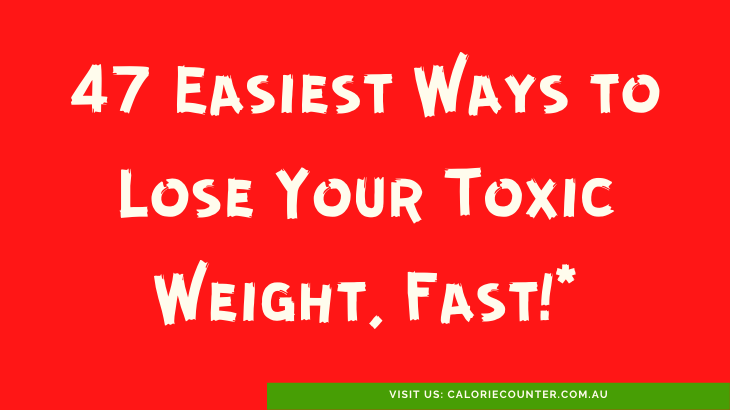For years we have been told that going out into the sun without SPF1000 sunscreen is like forcing your skin to chain-smoke double-tar cigarettes in the Mad Men meeting room. We have all seen the slickly produced “public service” warnings which equate sunbathing with skin cell torture. And for the love of all that is decent please don’t let your kids run about outside before you check your UV Intensity App, slather the sunscreen, then wrap them in long sleeves, a Little Digger’s Hat and wraparound sunglasses!
Well, we are going to challenge that sun avoidance thinking with this article by explaining that the benefits of getting out with nothing between your skin and the sun far outweigh the risks of excessive sun exposure.
The risk is real, but put it in perspective
Sunlight causes skin cancers like melanoma because it contains UVB light, which can damage the DNA in skin cells by directly impacting the molecule’s structure. When DNA is damaged, it does not function normally and can cause cancerous cells to grow. The sun is the cause of about 90% of all skin cancers (the other 10% is caused by tobacco smoking, UV tanning beds, virus infections, genetic syndromes, immunosuppressive medication, other carcinogens and chronic wounds).
Skin cancers cause between 1,600 and 1,900 deaths in Australia each year. About 150,000 people die every year in Australia, so skin cancers account for about 1.2% of all deaths each year, which is roughly comparable to the number of deaths from accidental falls (about 1,700 each year) and suicides (about 2,300 per year). In comparison, heart disease kills about 21,000 people (15%), dementia (including Alzheimer’s disease) kills about 11,000 and lung cancer (including respiratory tract cancers) kills about 8,000 people each year.
Globally, the problem of skin cancer is even less significant. The World Health Organisation estimates that skin cancer contributes just 0.1% towards the total world disease burden.
Think about those statistics for a moment… Out of the 24,000,000 people in Australia who are exposed to the sun every day, 1,900 die of skin cancer. Then think about how much publicity skin cancer gets compared to other causes of death. Why do we not get nearly the same volume of scary warnings and advertisements about diabetes, influenza and suicides, when they are the cause of so many more deaths than skin cancers? Could it perhaps be because there is a global multi-billion dollar industry supplying sunscreen, sunglasses, UV-protective clothes and other paraphernalia?
Skin is made for sunlight
The sun has been shining on planet Earth for 4.453 billion years and we humans have been basking in its light for 6 million years. Every aspect of our existence not only depends on the sun, but every single part of our bodies can be explained by its relationship to the sun. Skin is the biggest organ of the body and it is eminently adapted and “designed” to be under the sun, soaking up rays of light. Our bodies are supposed to spend lots of time in sunlight because they have become adapted to sunlight over billions of years of evolution.
Sunlight exposure benefits the health of humans in many different ways, but we will just focus here on three obvious ones:
-
Vitamin D: Everyone learns about plant photosynthesis in school, but less is taught about human photosynthesis. Human photosynthesis is happens when UVB light from the sun gets into the skin and converts a chemical already in the skin layers (dehydrocholesterol) into a form which your body uses to make vitamin D. Vitamin D regulates at least 1,000 different genes in the human body which govern virtually every single type of body tissue. The active form of vitamin D is vitally important for the neuromuscular and immune systems, as well as calcium metabolism. This means that a shortage of vitamin D causes a wide range of problems in just about every part of the body, but it does not usually cause a complete failure of any single organ. A person deficient in vitamin D may have lots of niggling issues like a less-effective immune system, sore joints, low energy levels, and less-effective nerve and brain function. It may take much longer to bounce back from relatively minor infections like those which cause sore throats and winter coughs. These problems may develop into or cause significant health issues like osteoporosis or chronic infections. In fact, vitamin D deficiency has been linked to dementia, prostate and breast cancer – all of which cause far more deaths than skin cancer! In children, a deficiency in vitamin D causes Rickets, an irreversible condition where bones are not formed properly and limbs become bent and misshapen. It is estimated that over 30% of all adults in Australia are deficient in vitamin D, but it is hard to pin down the exact number down because their symptoms are not obvious.
-
Circadian rhythm: Circadian rhythms are present in the majority of plants and animals, including humans. They are cycles of body function which repeat themselves every 24 hours or so. An obvious component of the human circadian rhythm is sleep, but there many other cycles which are less visible. Numerous studies have shown that disrupting normal circadian rhythms can cause severe health problems including metabolic issues like diabetes and obesity. Morning sunlight contains blue light which, when entering human eyes, promotes healthy circadian rhythms by causing the body to release melatonin (an important hormone), which triggers a robust circadian rhythm. Bright morning light exposure has been shown to treat seasonal affective disorder, premenstrual syndrome and insomnia.
-
Skin infections: Sunlight kills bacteria and fungi that cause skin problems such as acne, psoriasis and tinea. You might have noticed that paving stones in the shade are much more likely to grow mould than paving stones which get lots of sunlight. The same principles work broadly with your skin!
So, if we know that we need sunlight, but we also know that we risk getting skin cancer by being exposed to it, what choices should we make? Here are our suggestions:
-
Use the Burn System: This is going to sound too simple to be worth mentioning but here it is: Go directly under the sun as often as possible, but get into the shade as soon as you feel the burn. The burn is a unique feeling, different from the warmth or heat that you might get from an air-conditioning unit or electric heater. When you feel the sun burning, that is the beginning of sunburn, which is the effect of UVB rays damaging the DNA of your skin. You feel it deep in your skin and something equally deep in your brain tells you to move to shade and water quickly. (That burn is why elephants wallow and birds bath. That burn is why people choose to sunbathe near the sea or some other big and inviting body of water. It feels luxurious to be able to get to water and shade whenever you feel the burn, even if you don’t really swim.) It is hardly a revolutionary concept, but humans and animals have used this simple system instinctively for millions of years. The length of time it takes to feel the burning sensation depends on several factors including your skin type, the time of day, or where you are in the world. In the middle of the Sahara Desert at midday it could take two minutes before you get that feeling, or it might take all day in Northern Greenland. Your body’s senses have been fine-tuned to recognise danger, based on millions of years of evolution, so listen and act in accordance with your instincts. Do not lie on the beach and tolerate the burning just because you have been led to believe that your expensive sunscreen is keeping you safe. By the same token, do not stress out if your skin turns brown after a couple of hours out on the lake if you do not feel the burn.
-
Protect the more sensitive skin areas with clothing and sunglasses. Skin on the face and eyes is much thinner and more susceptible to damage, so they should be protected more than other skin areas. Even with protection, you must ultimately rely on the Burn System (see above).
-
Use sunscreen very sparingly. This flies in the face of what we are usually told to do but there are real, good reasons to avoid sunscreen. Most sunscreens contain chemicals like xybenxybenzone which can disrupt normal hormone function and cause skin cancer, and retinyl palmitate which is also a carcinogen. Perhaps more importantly, sunscreen blocks the very same UV light which your body needs to make vitamin D. Sunscreen confuses your internal warning system (the burn) by delaying it in the areas where it is applied. Since it is difficult to get it spread everywhere unless you bath in it, you may jeopardise the health of some parts of your skin (because your “sunscreened” parts are not feeling the burn soon enough). And then there is the clincher: a 2015 study in the US showed that over 80% of sunscreens sold over the counter simply do not work!
We are heading into spring and summer soon but don’t wait until then to get out under the sun. It is important to remember that UVB light cannot penetrate glass, so your body will not make vitamin D from sunlight that comes through your office window. Even if you just roll your car window down during the drive home from work, make sure you get some pure sunlight directly onto your skin… until you feel the burn.









